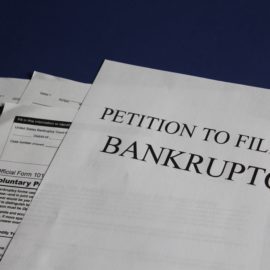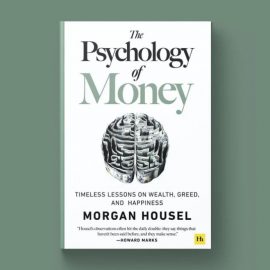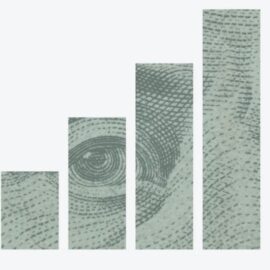
What are some smart ways to invest your tax refund? Can investing your tax refund help you get ahead financially?
If you invest tax refund funds wisely, such as by paying off high-interest debt, contributing to retirement accounts, or building an emergency fund, you can supercharge your financial stability. With effective management, this “unexpected” income can transform into a powerful tool to expedite your journey to financial freedom and make your hard-earned money work even harder.
Dive deeper into how your tax refund can work significantly harder for you and steer you faster toward financial freedom.
1. Pay Off High-Interest Debt
Paying off high-interest debt, be it from credit cards, payday loans, or personal loans, is a crucial financial move and a very effective method of investing your tax refund. It holds the key to curtailing the snowball effect that high-interest debt can cause, saving you significant amounts of money in the long run.
Why is this important? High-interest debt sinks its teeth into your income, diminishing the funds you could otherwise put toward savings, investments, or other financial goals. It operates quite like a leak in your monetary ship—and plugging this leak is the first step toward embarking on the journey to wealth accumulation.
So, what’s the best strategy for paying off high-interest debt? Recommended by many financial pundits and perfectly encapsulated in the book The Simple Path to Wealth by J. L. Collins, the strategy is to prioritize this type of debt. By paying more than the minimum payment due each month, you can dramatically shorten the lifespan of the debt and significantly decrease the amount of interest paid over time.
Using your tax refund to lighten this load can be a game-changer. It frees up more of your monthly income, enabling you to divert resources to other areas like bolstering an emergency fund, increasing retirement contributions, and following a path toward financial freedom. So remember, in the landscape of monetary growth, paying off high-interest debt is like clearing the weeds—an important preliminary step towards cultivating a thriving financial garden.
TITLE: The Simple Path to Wealth
AUTHOR: JL Collins
TIME: 30
READS: 98.9
IMG_URL: https://www.shortform.com/blog/wp-content/uploads/2020/11/the-simple-path-to-wealth-cover.png
BOOK_SUMMARYURL: the-simple-path-to-wealth-summary-jl-collins
AMZN_ID: XYZ
2. Create an Emergency Fund
An emergency fund is a stash of money set aside to cover unexpected expenses or financial crises, such as sudden job loss, health emergencies, or urgent car repairs. It’s essentially your defense line against life’s unpredictable setbacks, acting as an anchor of financial stability amidst turbulent events.
Why do you need an emergency fund? Simple: things happen. From minor to major surprises, life can throw curveballs that leave us scrambling to cover unexpected costs. By having an emergency fund, you’re shielding your financial health from unexpected blows, thereby sparing yourself from resorting to high-interest borrowing or draining your hard-earned savings.
So, how much should you ideally put into this fund? Financial experts generally recommend stocking your emergency fund with enough money to cover three to six months of your essential living expenses—things like rent or mortgage payments, grocery bills, utilities, and necessary insurances. This provides a cushion to fall back on, should you face unexpected roadblocks on your financial journey.
It’s worth noting that building an emergency fund isn’t about hoarding wealth; it’s about equipping yourself with the necessary armor to navigate through unexpected financial turbulence. Allocating your tax refund to this fund is a smart move, one that reinforces the foundation of your financial house.
3. Invest in Retirement Accounts
Retirement may seem a distant prospect, but planning for it today can make a significant difference in how comfortably you’ll live tomorrow. Savvy investments in retirement accounts like a 401(k) and Roth IRA can provide a steady stream of income for you in your golden years, and they’re great places to put your tax refund.
Saving for Retirement: 401(k) and Roth IRA
The 401(k) plan, often offered by employers, and the Roth IRA, an individual retirement account, are two pivotal players in the retirement planning field. Each offers its distinct advantages, making a sturdy combination for your retirement savings strategy.
A 401(k), funded with pre-tax dollars, grows tax-deferred—that means you’ll pay taxes only upon withdrawal in retirement. Many employers also offer 401(k) match programs, essentially providing free money towards your retirement.
Roth IRAs, on the other hand, are funded with post-tax dollars, but withdrawals in retirement are tax-free. This can be particularly beneficial if you anticipate being in a higher tax bracket later in life.
By utilizing both a 401(k) and Roth IRA, you diversify your tax exposure and maximize retirement savings. You’re creating a financial balance, outlined brilliantly in I Will Teach You to Be Rich by Ramit Sethi.
TITLE: I Will Teach You to Be Rich
AUTHOR: Ramit Sethi
TIME: 66
READS: 171.7
IMG_URL: https://www.shortform.com/blog/wp-content/uploads/2021/05/i-will-teach-you-to-be-rich-cover.png
BOOK_SUMMARYURL: i-will-teach-you-to-be-rich-summary-ramit-sethi
AMZN_ID: XYZ
Earning During Retirement: Income Annuities, Bonds, and Other Investments
The art of retirement isn’t just about saving; it’s also about continuing to earn and crafting a desirable retirement lifestyle. The prospect of living off your savings alone could be daunting; what if they dwindle faster than expected?
Hence, income annuities, bonds, and other investments may play a big role. Income annuities can provide a steady stream of income for a lifetime or a set number of years. Bonds, often seen as less risky than stocks, provide fixed income over time.
The Little Book of Common Sense Investing by John C. Bogle sheds light on investing and emphasizes a balance between stocks and bonds for a successful retirement portfolio.
In a nutshell, consider your tax refund as a step closer to a comfortable retirement. Starting early, diversifying your retirement accounts, and having earning strategies even in retirement are the cornerstones of a fail-safe retirement plan.
3. Put Money in a Taxable Brokerage Account
Building a varied investment portfolio doesn’t stop at retirement accounts. Taxable brokerage accounts, an alternative investment tool, offer a world of opportunities and immense flexibility, differentiating them from traditional IRAs or 401(k)s.
Unlike IRAs and 401(k)s, taxable brokerage accounts don’t come with contribution limits, allowing you to invest as much as you want. Additionally, you’re not bound by rules on when you can withdraw your money, unlike the pre-age-59.5 penalties often associated with most retirement accounts.
So, what’s the benefit? Flexibility is one. If you need funds for a major expense before retirement age and don’t want to tap into your emergency fund or incur penalties on early retirement account withdrawals, your brokerage account can come to the rescue.
Taxable brokerage accounts also provide opportunities to diversify your portfolio with an array of investment options from stocks to bonds, mutual funds, and more, offering a chance for potentially high returns.
Fortune recommends taxable brokerage accounts as the most versatile investment option. The balance between flexibility, investment opportunities, and unlimited contribution potential makes them an excellent channel to grow your wealth. With such benefits, deploying part of your tax refund into a taxable brokerage account could give a significant boost to your investment strategy, unlocking a new level of financial agility for you.
4. Create an Education Savings Account
An Education Savings Account (ESA), also known as a Coverdell Education Savings Account, is a financial tool designed to help fund educational expenses for a designated beneficiary. It’s like an investment pot that’s specifically for educational goals, offering tax advantages on growth and withdrawals for qualified educational expenses.
So, how does an ESA work? Contributions made into this account are post-tax, meaning you’ve already paid tax on the money being put in. However, the earnings from your investments grow tax-free, and withdrawals used for qualified educational expenses are also tax-free. This includes not just higher education costs, but expenses for elementary or secondary education as well.
Investing your tax refund into an ESA is a smart strategy, and here’s why: education costs, whether they’re for private elementary schools, college tuition, or other associated expenses, are continually on the rise. By starting to save early and investing wisely, you can help offset the significant costs typically associated with education, offering you peace of mind and a substantial financial launchpad for your child’s learning journey.
In essence, an ESA empowers you to transform your tax refund into a legacy, a fruitful investment into securing brighter educational paths for your loved ones.
5. Invest in a Real Estate Trust
Venturing into the world of real estate can be a lucrative pathway to wealth building. It’s an avenue known for its potential for regular cash flow, appreciation, tax benefits, and diversification, making real estate an enticing option to consider for your tax refund investment strategy.
Real estate investments can take on many forms, from purchasing residential or commercial property to buying shares in a Real Estate Investment Trust (REIT). Purchasing property can require substantial capital and commitment, and so, may not be feasible for everyone, especially if you’re using only your tax refund.
And this is where REITs come into the picture. A REIT is a company that owns and typically operates income-producing real estate or related assets. These formal trusts allow you to invest in a professionally-managed portfolio of real estate properties, providing you with an opportunity to participate in the returns from these properties, often in the form of dividends.
So if you’re keen to invest in real estate but don’t have enough funds for a direct property purchase, a REIT could be your ticket in. It offers a door not only into potentially steady income from dividends but also the chance for capital appreciation, with the added bonus of liquidation ease compared to selling a physical property.
In a nutshell, REITs could offer you the opportunity to earn rental income indirectly, without the need to buy, manage, or finance any properties yourself. Pouring a section of your tax refund into REITs can be a prudent move, enabling you to dip your toes into the realm of real estate, and start reaping the benefits it can offer.
6. Put Money Aside in a Health Savings Account
A Health Savings Account (HSA) is a type of tax-advantaged savings account that you can use to pay for a wide range of medical expenses. This account is available to those who are enrolled in a high-deductible health plan (HDHP), providing an avenue to make healthcare more affordable.
So, how does an HSA shine when it comes to taxes? Firstly, contributions made to the account are tax-deductible, meaning they reduce your overall taxable income. Secondly, the money in an HSA grows tax-free and can be withdrawn tax-free, as long as it’s used for qualified medical expenses. This triple tax advantage makes HSAs exceptionally valuable compared to other savings options, with few other accounts offering such benefits.
Investing your tax refund into an HSA can be a shrewd move for several reasons. Aside from the significant tax benefits, an HSA can act as an additional emergency fund—one specifically designed for medical emergencies. Given the high costs associated with healthcare, an HSA can prevent a health issue from becoming a financial nightmare, covering everything from prescriptions and doctor visits to surgeries and other major medical expenses.
Furthermore, unlike flexible spending accounts (FSAs), the balance in an HSA rolls over year after year, and the account goes with you if you switch jobs, making it a highly portable and enduring aspect of your financial strategy.
In essence, funneling your tax refund into an HSA could dramatically bolster your financial wellness, providing considerable relief in an area known for its expense—healthcare.
Your Tax Refund, Your Asset-Builder
Viewing a tax refund as a springboard rather than a windfall can shift your financial game. Whether it be paying off high-interest debts, setting the stage for a worry-free retirement, building a definitive shield against unanticipated setbacks with an emergency fund, or venturing into various investment avenues, these strategies underscore the value of investing your tax refund wisely.
From the flexible routes of a taxable brokerage account to the educational paths an ESA can pave, poised alongside the bricks-and-mortar advantages of REITs, and the three-fold tax benefits of an HSA, utilizing your tax refund in these avenues can offer considerable strides in advancing your financial freedom goals.
Ultimately, remember that your tax refund, like all resources, thrives best when mindfully managed. These strategies have underscored the transformative potential your tax refund can unlock, and the critical recognition that an integrated approach often leads to the best results.
Take time to understand these pathways and find one, or a blend of a few, that align with your unique financial goals and situation.





